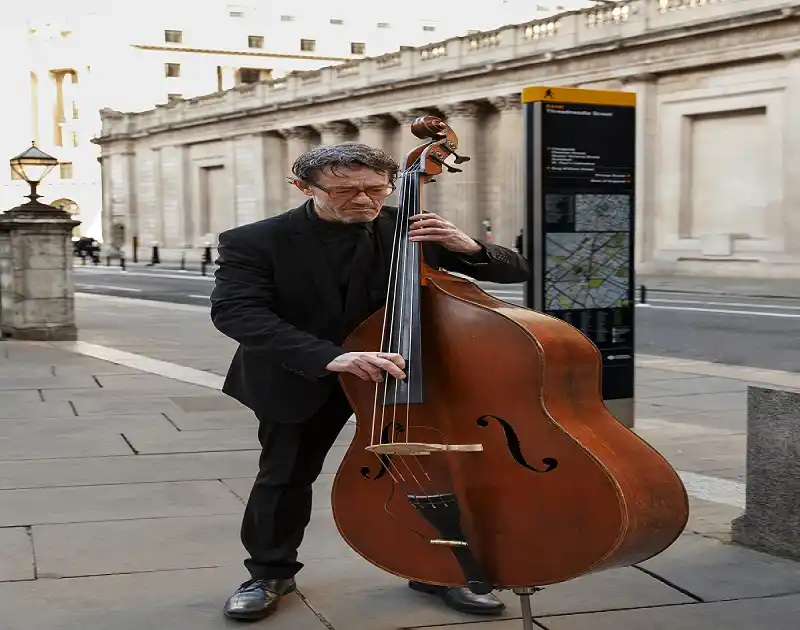To truly understand how classical music evolved into the accessible and beloved form it is today, it’s essential to select all the ways that middle-class tastes influenced classical music. During the 18th and 19th centuries, the rise of the middle class dramatically reshaped the musical world. From concert halls to home parlors, their values and desires transformed how music was written, performed, and shared with the public. This article will explore those key influences and explain how the middle class helped shape the very canon of classical music.
1. The Rise of Public Concerts and the End of Exclusivity
Before the emergence of a robust middle class, classical music existed mainly within royal courts and the private estates of aristocrats. But as cities grew and the bourgeoisie gained wealth and influence, they demanded access to the arts. Public concerts became the norm. Subscription-based concert series, like the Bach-Abel concerts in London, were open to anyone who could buy a ticket, expanding audiences and giving composers new incentives to appeal to the public rather than just nobility.
2. Expansion of Orchestras to Meet Growing Expectations
Middle-class audiences craved grandeur and emotional expression. To meet those expectations, orchestras grew larger and more dynamic. Composers like Beethoven and Berlioz added brass, percussion, and woodwind instruments, all to create thrilling soundscapes that captivated the public. When we select all the ways that middle-class tastes influenced classical music, the growth of the orchestra is a clear marker of their desire for bigger, more immersive performances.
3. Piano: The Middle-Class Instrument
The piano became a staple in middle-class households, symbolizing refinement and education. Families invested in lessons, especially for young girls, believing that musical skill was part of proper upbringing. Composers like Chopin, Schubert, and Clara Schumann tailored their compositions for this market. They wrote much of their piano music for performance in salons or at home. While some pieces challenged skilled musicians, they composed many works specifically for amateur players—beautiful yet accessible music that people could enjoy beyond the concert hall. This home-centered culture is essential when we select all the ways that middle-class tastes influenced classical music.
4. Chamber Music and Domestic Performance Culture
Middle-class families favored string quartets, piano trios, and small ensembles for in-home entertainment. They frequently played works by Haydn, Mozart, and later Brahms and Dvořák in their drawing rooms instead of concert halls. The popularity of chamber music reflected the growing culture of amateur music-making. By including chamber music in our list when we select all the ways that middle-class tastes influenced classical music, we highlight how intimate, participatory experiences became just as valued as grand performances.
5. Simplified Compositions and Folk Influences
Composers understood their new audiences and wrote accordingly. They integrated folk tunes, regional melodies, and nationalistic themes into their work to make it more relatable. Dvořák’s “Slavonic Dances” and Grieg’s “Peer Gynt” brought local flavor to the concert hall. They also wrote simplified pieces so amateur musicians could perform them at home. This trend is another key factor as we select all the ways that middle-class tastes influenced classical music—they wanted music that was emotionally engaging, technically accessible, and culturally familiar.
6. Creation of Conservatories and Music Education Reform
The middle class valued structured education, and this extended into music. Conservatories in cities like Paris, London, and Leipzig began training young musicians—many from middle-class families. These institutions didn’t just produce performers; they cultivated a new generation of listeners who appreciated classical music on a deeper level. To select all the ways that middle-class tastes influenced classical music, we must include this widespread access to music education, which built lasting appreciation and a consistent audience base.
7. Promenade and Popular Concert Movements
Philippe Musard and Louis Jullien revolutionized public concerts with the promenade concert format. These affordable, casual events mixed popular and classical works to attract wider audiences. Conductors presented accessible programs that combined Beethoven with dance music or patriotic anthems. If we were to select all the ways that middle-class tastes influenced classical music, these concerts exemplify how musicians adapted programming to meet public demand for entertainment, variety, and emotional connection.
8. Shaping of the Classical Canon
Middle-class tastes have significantly shaped the Western musical canon—the list of “great works” that musicians continue to perform and study. As concertgoers, they influenced which pieces gained popularity. Conductors and concert organizers frequently programmed works by composers like Beethoven, Brahms, Tchaikovsky, and Mendelssohn, boosting their widespread popularity. When we select all the ways that middle-class tastes influenced classical music, the shaping of the canon is crucial—it reflects how certain values, such as emotional expression and lyrical beauty, came to define “great” music.
Music critics, educators, and concert organizers from middle-class backgrounds increasingly determined which composers gained prominence and which were overlooked. Their preferences cemented the reputations of some composers while allowing others to fade, creating a canon that continues to shape music education and programming today.
Conclusion
When we select all the ways that middle-class tastes influenced classical music, we uncover a sweeping transformation—from royal courts to public halls, from private patronage to mass education, and from elite entertainment to shared cultural identity. The middle class didn’t just fund and attend performances—they redefined what classical music meant and who it was for.
By influencing composition styles, performance practices, education systems, and even which composers we still celebrate today, middle-class audiences helped shape classical music into a dynamic, evolving, and widely accessible art form. Understanding this influence enriches our appreciation of classical music’s past and illuminates its continuing evolution.
For more important information please visit my website: fixhq
